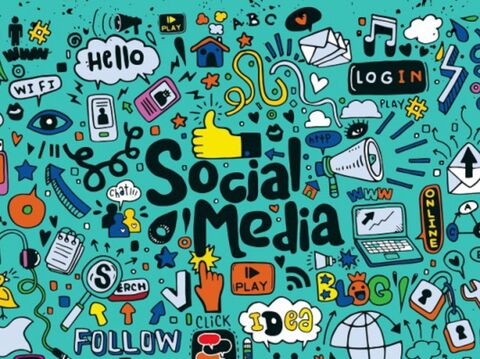Know The Difference Between User Journey and User Flow

Design is a critical aspect of building any website or application. If you are new to UX design, it is common to feel overwhelmed. User journeys and user flows are two terms that can be confusing even for a seasoned designer.
Although both these tools are used for creating visual representations of a user's interactions with a product, they differ in several ways. This blog elucidates the difference between user journey and user flow by comparing them on various points.
Definition
Knowing what these tools are is the first step to understanding their similarities and differences.
User Journey
It is the map of a person's relationship with a product over a while and across multiple channels. Also, it considers their emotions at every point in the journey.
This tool brings it to your notice when customers have a good experience in one channel and fail to do so in another. Therefore, it can help you identify gaps in the consumer's experience and rectify them.
User Flow
Website designers and app developers assess the user's navigation through the website or application. This leads to the creation of user flow.
They depict the set of steps that the user takes to achieve their goal at a specific stage within their journey. It covers all the technical details of user interactions in a single stage.
Purpose
Now that the definitions of user flow and user journey have been established, we can look at their roles and their benefits to the design process.
Consider seeking professional services to make the most out of these tools. We at Growth Jockey look into the needs of your business and apply the benefits of these tools appropriately and efficiently.
User Journey
This tool helps to visualise the user's relations with a product and lets designers look at a product from the user's perspective. It is the story of a customer interacting with a product and their thoughts and feelings at every touchpoint.
You can use the insights provided by this to research your customers' needs, improve user flow and ultimately provide them with a personalised product experience. Further, you can also identify potential areas for upgrades.
The user journey on a website is easy to grasp for people even outside the design industry. Therefore, they are efficient for communicating with investors.
User Flow
This is used to track what the users see on the screen and their interactions with it. It enables designers to provide an optimum user experience.
A user could follow more than one path to achieve the goal. User flows present these patterns to the designers and makes it easy for them to evaluate and improve the problem areas.
They make the presentation of your interface to teammates easier. Moreover, they can grasp your intention much faster, leading to higher productivity and reduced communication gaps.
Mapping Them Out
As we now know what these tools are, let's go ahead and look into the process of creating them. The stages are similar.
Here are the steps you can follow to create a user journey flow or a user flow diagram.
- Define your goals
Before you begin the actual process of mapping, you need to answer a few crucial questions that will help you define your objectives and what you hope to achieve. This is important because it reminds you to customise all aspects of the diagram towards your target customers.
- Know your customer
Researching your customers will help you build user personas and determine their needs. Gathering feedback from your existing customers is an efficient way to conduct research. Once you collect feedback, analyse it to find the customers' objectives, problem areas and expectations.
- Organise a list of different touchpoints and channels
Your research should give you an insight into the touchpoints spread across several channels your customers are engaging with. You can use it to find out the actions performed by your customers. Therefore, it is a crucial step in this whole process.
- Make the map
Now that you have all you need to create your map, you can visualise this data. Further, you need to study it and use the inputs it provides to improve your performance and enhance the consumer experience.
Enlisting the help of reputable professionals can alleviate the risk of errors in the diagram. At Growth Jockey, our trained experts will assist you throughout the process while you focus on other ways to boost productivity.
Difference Between User Journey and User Flow
We have gone through some of the aspects of these tools. Now, let's take a focused look at the differences.
1. Level of Analysis
A user flow is concerned with micro-level interactions of individual users. On the other hand, a user journey provides a macro-level representation of the customer's interactions with your products from the first touchpoint to the last. It examines the actions of more than one user.
As a result, creating a user flow is much easier than drawing out the entire journey map.
2. The Focus Area
A user flow deals with the actions taken by the user. It inspects the details of these actions. Additionally, it is concerned with the technical aspects of the interaction.
A user journey concentrates on the users' experiences at each interaction phase. Also, it considers their emotional state and feelings. They are not only concerned with technicalities but also with the individual's thoughts, pain points and moments of satisfaction.
3. The Degree of Specificity
User journeys give you a broad overview of consumer behaviour across multiple channels. Therefore, they tend to be generic.
In contrast, user flows to analyse the user's experience on one channel. This allows them to be more detailed. Thus, they are much more specific than user journeys.
4. Time Range
A user journey map represents the consumer interactions over a more extended period, right from the awareness stage to the purchase. Conversely, a user flow provides a detailed account of the actions taken by the user at a particular point in time.
5. Route
User flow considers only the information required for users to achieve the goal, while user journey also considers their emotions in each stage. The route is determined accordingly.
At the final stage of the user journey, the user's emotions decide if they will achieve their goal and purchase the product. Therefore, this stage is crucial.
6. Roles
User journeys focus on the process as a whole. They act as guides for the users as they analyse the interactions of users with the product and subsequently create paths to direct them to their goals.
User flows are centred around the user's ability to take different paths to reach the same goal. Thus, they function as tools.
7. Primary Purpose
User journeys are used to get an idea of the consumer experience across multiple touchpoints. On the other hand, user flows can help in understanding the path taken by each user in reaching their destination.
In Conclusion
Although user journeys and flows look very similar at first glance, they focus on different facets of user interactions. Using them in tandem helps you increase customer satisfaction significantly.
An optimum way to use them is to start mapping the primary phases of the user journey. After that, you can proceed to add details with user flow maps It helps enhance the consumer experience.
Designing websites and apps successfully might take much effort at the initial stage of your business. This is where Growth Jockey steps in. Our team of experts will ensure that these aspects make your path to success smooth.
At Growth Jockey, we are dedicated to crafting personalised models that successfully tackle the key challenges encountered by our clients across diverse industries, enabling them to enhance the user journey. Regardless of your company's size, whether it's a small-scale enterprise or a large corporation, you can now leverage advanced technology to optimise the user journey. Take a decisive step towards unlocking the next level of growth for your brand by contacting us today!








